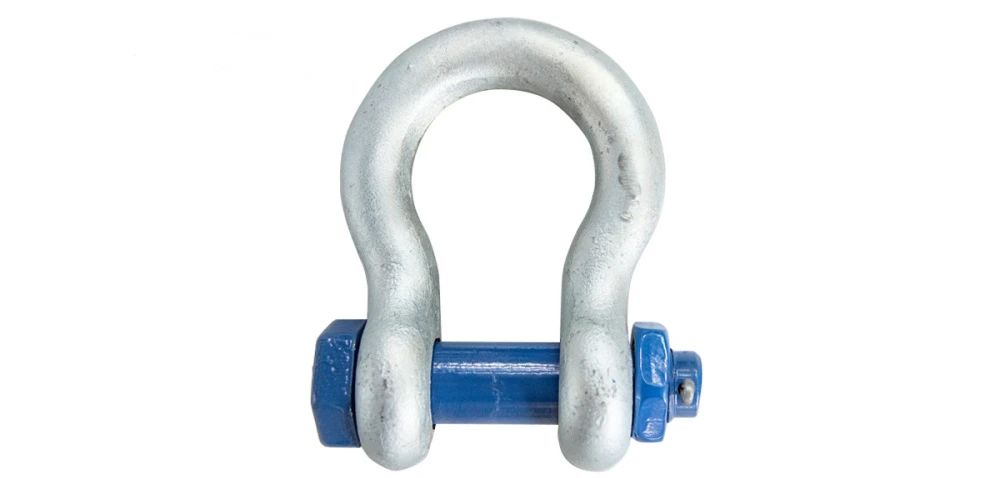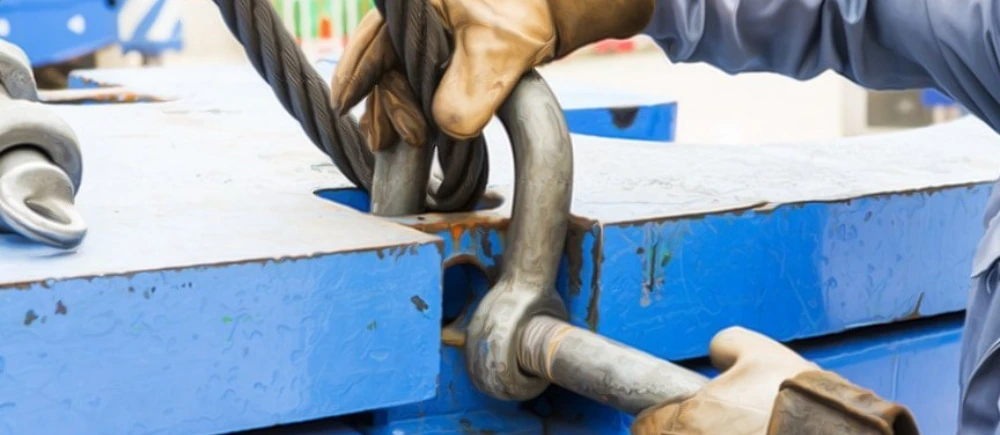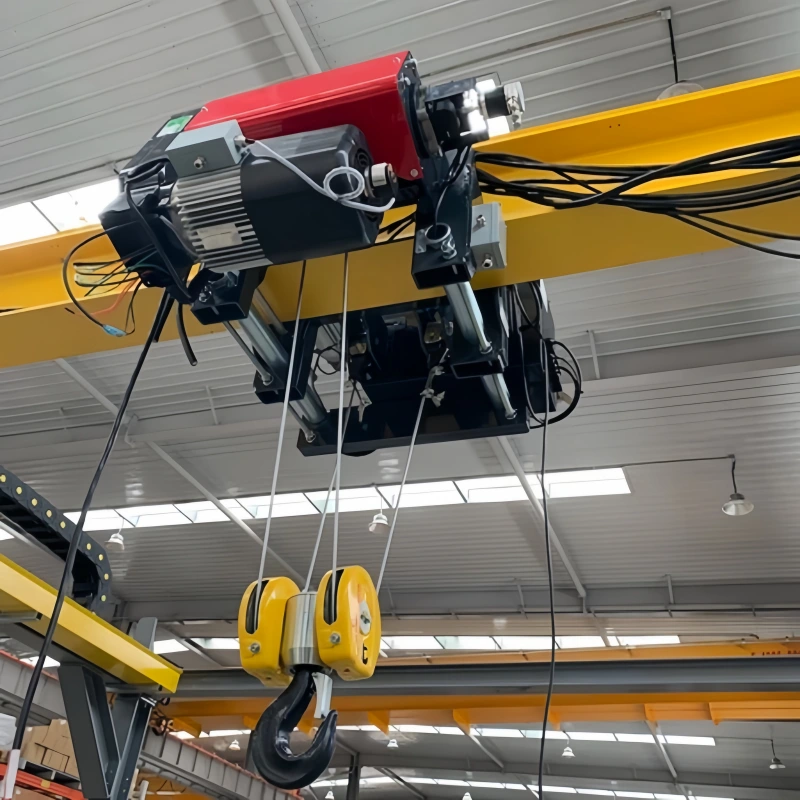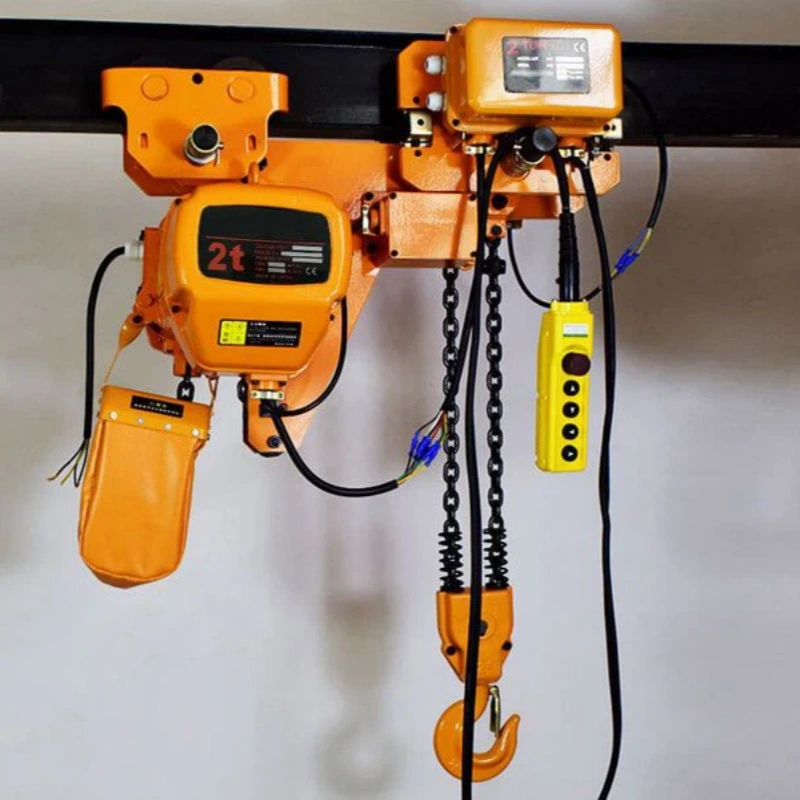You use a bow shackle to connect lifting equipment and secure loads in rigging tasks. This strong, curved connector handles forces from multiple directions, making it a key part of safe lifting operations. When you choose a certified bow shackle, you help prevent accidents and equipment failure.
Proper sizing and understanding the difference between a bow shackle vs D shackle also support long-term safety and efficiency. Powerful Machinery supplies certified shackles trusted by professionals for demanding jobs.
Key Takeaways
Bow shackles are essential for safe lifting and rigging. Their rounded shape allows for multi-directional load handling, making them ideal for complex lifts.
Always check the working load limit before using a bow shackle. This ensures safety and prevents accidents during lifting operations.
Choose the right pin type for your bow shackle. Screw pins are great for quick jobs, while bolt and nut shackles offer maximum security for long-term use.
Inspect shackles regularly for wear and damage. A thorough check can prevent serious accidents and ensure reliable performance.
Select certified shackles from trusted suppliers like Powerful Machinery. Certified products meet international safety standards and enhance workplace safety.
Bow Shackle Overview

What is a Bow Shackle?
You often see bow shackles in lifting and rigging tasks. A bow shackle has a rounded, “O” shaped body with a removable pin. This shape lets you connect chains, ropes, or slings and handle loads from several directions.
The wide opening makes it easy to attach multiple components, which is useful in complex lifts or when you need flexibility.
Bow shackles play a key role in connecting lifting equipment safely. You use them to join hooks, chains, or wire ropes, making sure the load stays secure during lifting or towing. The design spreads the force across the shackle, reducing stress on any single point. This helps prevent equipment failure and supports safe operations.
You can see the main parts of a bow shackle and their functions in the table below:
Component | Function |
|---|---|
Bow | Provides a secure connection point and handles loads from multiple directions, essential for effective force distribution during lifts. |
Ears | Secure the connection by aligning perfectly for smooth pin insertion, contributing to the shackle’s strength and resistance to bending. |
Shoulder | Distributes load evenly, retains the pin, maintains alignment, and enhances safety by preventing accidental disengagement. |
Key Features of Bow Shackles
Bow shackles stand out because of their mechanical properties and design. You rely on these features to ensure every lift is safe and efficient.
Property | Description |
|---|---|
Working Load Limit | Maximum load in pounds that can be applied in direct tension to an undamaged shackle. |
Proof Load | Load applied to test the shackle’s strength without causing permanent deformation. |
Breaking Load | Maximum load that the shackle can withstand before failure. |
Material Quality | Importance of using high-quality carbon and alloy steel for durability and safety. |
Safety Factor | Working load limits are based on a safety factor of 5 to 1, ensuring reliability under various loads. |
You should always check the working load limit or breaking strength before using bow shackles. Only use shackles that have been tested for strength. This reduces the risk of accidents and ensures reliability in demanding situations.
Bow shackles from Powerful Machinery use high-strength steel and advanced heat treatment. This process increases resistance to deformation and extends the life of each shackle.
Every shackle goes through strict quality checks and testing. Powerful Machinery’s products meet major international standards, including EN 13889, US Fed. Spec. RR-C-271, and ASME B30.26. These certifications show that you can trust their shackles for critical lifting jobs.
Recent innovations in bow shackle design focus on durability and versatility. Manufacturers use high-grade alloy or stainless steel to resist corrosion and wear.
The wide opening allows you to attach several components at once, making your rigging setup more flexible. The design also spreads the load, which protects slings and ropes from damage.
Tip: Always look for certified bow shackles with clear markings. This helps you verify the specifications and ensures you meet safety requirements on every job.
You see bow shackles used in many industries, such as construction, marine, and transportation. The demand for reliable shackles keeps growing as global infrastructure expands. Companies now focus more on worker safety and compliance, so high-quality, certified shackles are more important than ever.
Powerful Machinery leads the way in producing certified bow shackles for tough environments. You benefit from their commitment to quality, safety, and innovation. Their products help you complete lifting and rigging tasks with confidence.
Bow Shackle Types
Common Bow Shackles
You find several types of bow shackles in the rigging industry. Each type serves a specific purpose and fits different environments.
Powerful Machinery offers a wide selection, including stainless steel shackles, European types, and U.S. types. Stainless steel shackles resist corrosion, making them ideal for marine and outdoor use. European and U.S. types follow strict standards, ensuring you get reliable performance for lifting, towing, and securing loads.
Here is a quick overview of the most common types and their applications:
Type of Shackle | Application |
|---|---|
Bow Shackles | Suitable for handling multiple loads from different angles in industries like manufacturing, construction, shipping, oil and gas, and heavy engineering. |
You can choose bow shackles with different load ratings. Some models, like the ISHK-B Bow Type Crosby™ Cabled Load Shackle, are proof loaded to 150% of their rated load.
Load ratings range from 1 to 1,000 metric tons. Shackles use high tensile stainless steel or carbon steel pins, which provide strength and durability for heavy-duty tasks.
Bow shackles handle complex lifts where you need to connect several slings or ropes.
Stainless steel shackles work well in harsh or wet environments.
European and U.S. types meet international safety standards.
Pin Types for Bow Shackles
The pin type you select affects both safety and how you use the shackle. You have three main choices:
Screw pin shackles: Easy to assemble and remove. Best for temporary or quick jobs. Lightweight, but the pin can loosen if not checked.
Round pin shackles: Use a cylindrical locking pin for better security. These work well when you need some rotation, such as in towing.
Bolt and nut shackles: Offer the highest level of safety. The bolt, nut, and cotter pin keep the shackle secure, making them ideal for permanent or long-term installations.
Pin Type | Description | Best Use Case |
|---|---|---|
Screw Pin Shackles | Easy to assemble and remove. | Temporary or quick jobs |
Bolt-Type Shackles | More secure with a nut and cotter pin. | Long-term or permanent installations |
Round Pin Shackles | Used where rotation is involved. | Towing applications |
Tip: Always match the pin type to your job. For heavy or long-term lifts, choose bolt and nut shackles for maximum safety. For quick tasks, screw pin shackles save time but require regular checks.
Choosing the right pin type ensures your bow shackle stays secure and reliable. This decision protects both your equipment and your team.
Bow Shackle vs D Shackle

Shape and Design Differences
When you compare bow shackle vs d shackle, you notice clear differences in shape and function. Bow shackles have a rounded, bow-like body. D shackles feature a straight, D-shaped design. This difference affects how each shackle handles loads and movement.
Here’s a quick comparison:
Feature | Bow Shackles | D Shackles |
|---|---|---|
Shape | Rounded, ‘bow’ shape | Streamlined, ‘D’ shape |
Movement | Allows for side-to-side movement | Limits lateral movement |
Strength | Excels in multi-directional loading | Sturdier in single, inline force |
Applications | Suitable for rigging systems | Commonly used in towing operations |
Limitations | Chunky design can be awkward | Not versatile for multiple directions |
You use a bow shackle when you need to connect multiple slings or handle loads from different angles. The rounded shape lets you move the load side to side. D shackles work best when you pull in a straight line. Their design keeps the load steady and reduces unwanted movement.
D-Shackles in Comparison
The bow shackle vs d shackle debate often comes down to how you plan to use the shackle. Bow shackles distribute stress evenly, making them ideal for complex lifts. You can trust them when you need to attach several components or expect the load to shift.
D shackles, on the other hand, focus on strength in one direction. They handle straight pulls and keep the load secure along the shackle’s length.
Bow shackles are designed to handle multi-directional loads. Their rounded body spreads out the force, which helps prevent weak spots. D shackles are optimized for unidirectional loads. If you use them for side pulls, you risk stress concentration and faster wear.
You often choose d shackles for these scenarios:
Loads that move in a straight line along the shackle’s length
Single-leg slings where you need one secure attachment
In-line tension applications that require bi-directional pull
Situations where sideloading is not a concern
Tip: Always match the shackle type to your lifting plan. Using the right shackle improves safety and extends equipment life.
Powerful Machinery offers both bow shackles and d shackles in a variety of sizes and materials. You can find stainless steel options for marine use or heavy-duty forged steel for industrial jobs.
Each shackle meets strict international standards, so you can trust their performance in demanding environments. When you compare bow shackle vs d shackle, you get the flexibility to choose the best fit for your project.
Bow Shackle Uses and Use-Cases
Bow Shackles in Rigging and Lifting

You often use bow shackles in rigging and lifting operations where you need to connect multiple slings or ropes. These shackles handle heavy loads and allow for movement from different angles. In construction, you rely on bow shackles to lift beams, secure scaffolding, and move equipment safely.
Marine industries use bow shackles for mooring lines and anchor chains because they resist corrosion and provide reliable strength. Vehicle recovery teams choose bow shackles for towing and winching, as the wide opening makes it easy to connect a bow shackle to various hooks or straps.
Bow shackles from Powerful Machinery are suitable for applications that demand high strength and durability. Each shackle undergoes strict testing and meets international standards, so you can trust them for critical lifting operations.
You receive a certificate of conformity with every product, confirming compliance with OSHA, ASME, NACM, and ASTM standards.
D-Shackles in Industry
D-shackles play a key role in many industries. You use d-shackles when you need a secure, straight-line connection. These shackles work well for single-leg slings, chain assemblies, and towing tasks. In shipping, d-shackles secure cargo and rigging lines.
Construction crews use d-shackles to connect lifting chains and hoists. Vehicle recovery specialists rely on d-shackles for pulling and securing vehicles during transport.
D-shackles offer high load capacity and resist deformation under tension. You benefit from their compact design, which fits tight spaces and reduces unwanted movement. Powerful Machinery provides d-shackles that meet strict safety and quality standards, making them a trusted choice for demanding environments.
Selecting the Right Shackle
When you select shackles for rigging and lifting, always consider the safe working load and load capacity. You must inspect shackles for wear, deformation, rust, or corrosion before every use.
Make sure the pin is properly secured. If you see any damage or if the shackle fails inspection, discard it immediately. Improper use or care can lead to serious accidents, so regular inspection is essential for safety.
Tip: Always check the manufacturer’s markings for load capacity and certifications. This helps you choose the right shackle for your specific applications and use-cases.
Powerful Machinery tests every shackle to ensure strength and reliability. Their products are suitable for applications in marine, construction, and vehicle recovery.
If you want to know how to use a bow shackle safely, always follow industry guidelines and perform regular inspections. You connect a bow shackle by inserting the pin and tightening it securely. For lifting operations, use shackles that match your load requirements and environmental conditions.
By choosing certified shackles from Powerful Machinery, you ensure safety and performance in every rigging and lifting task.
Conclusion
You see bow shackles used in construction, shipping, and recreation for secure lifting and rigging. D-shackles work best for straight-line pulls. Certified shackles from Powerful Machinery improve workplace safety and reliability. You benefit from strict quality control, international standards, and full traceability.
Industry | Application Description |
|---|---|
Construction | Connecting lifting slings to cranes for safe and efficient transfer of heavy loads. |
Shipping | Securing cargo to ensure stability during transport on vessels. |
Recreational | Used in boating for rigging systems and in rock climbing for creating secure anchor points. |
Consult Powerful Machinery for expert advice and certified products that meet your lifting needs.
FAQ
What is the difference between a bow shackle and a D shackle?
A bow shackle has a rounded shape for multi-directional loads. A D shackle has a straight design for straight-line pulls. You choose a bow shackle for flexibility and a D shackle for single-direction strength.
How do you know which size bow shackle to use?
You select the size based on the working load limit and the diameter of your lifting equipment. Always check the manufacturer’s markings and match the shackle to your load requirements.
Tip: Never exceed the rated capacity marked on the shackle.
Are stainless steel shackles suitable for marine environments?
Yes, stainless steel shackles resist corrosion from saltwater. You can use them in marine, boating, and outdoor settings where rust is a concern.
How do you inspect a bow shackle for safety?
Check for cracks, deformation, rust, or worn threads. Make sure the pin fits tightly. If you see any damage, replace the shackle immediately.
Inspection Step | What to Look For |
|---|---|
Visual Check | Cracks, rust, or bends |
Pin Fit | Secure and tight |
Markings | Clear load rating |


